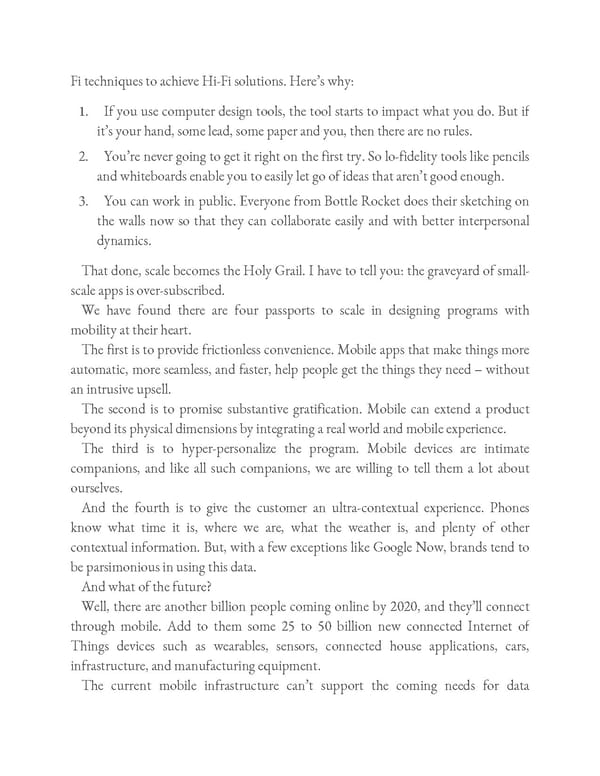Fi techniques to achieve Hi-Fi solutions. Here’s why: 1. If you use computer design tools, the tool starts to impact what you do. But if it’s your hand, some lead, some paper and you, then there are no rules. 2. You’re never going to get it right on the first try. So lo-fidelity tools like pencils and whiteboards enable you to easily let go of ideas that aren’t good enough. 3. You can work in public. Everyone from Bottle Rocket does their sketching on the walls now so that they can collaborate easily and with better interpersonal dynamics. That done, scale becomes the Holy Grail. I have to tell you: the graveyard of small- scale apps is over-subscribed. We have found there are four passports to scale in designing programs with mobility at their heart. The first is to provide frictionless convenience. Mobile apps that make things more automatic, more seamless, and faster, help people get the things they need – without an intrusive upsell. The second is to promise substantive gratification. Mobile can extend a product beyond its physical dimensions by integrating a real world and mobile experience. The third is to hyper-personalize the program. Mobile devices are intimate companions, and like all such companions, we are willing to tell them a lot about ourselves. And the fourth is to give the customer an ultra-contextual experience. Phones know what time it is, where we are, what the weather is, and plenty of other contextual information. But, with a few exceptions like Google Now, brands tend to be parsimonious in using this data. And what of the future? Well, there are another billion people coming online by 2020, and they’ll connect through mobile. Add to them some 25 to 50 billion new connected Internet of Things devices such as wearables, sensors, connected house applications, cars, infrastructure, and manufacturing equipment. The current mobile infrastructure can’t support the coming needs for data
 Ogilvy on Advertising in the Digital Age Page 304 Page 306
Ogilvy on Advertising in the Digital Age Page 304 Page 306